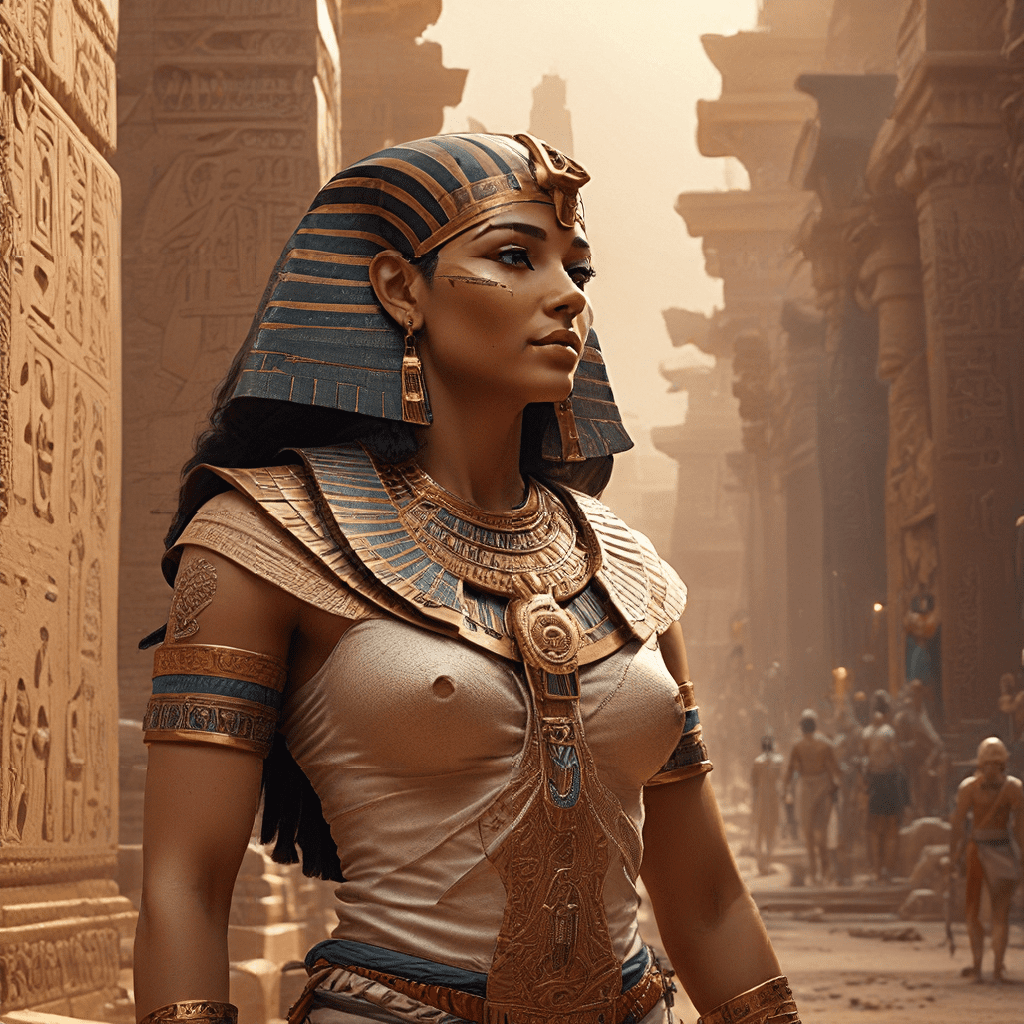The Egyptian Creation Myth: Shaping Ancient Civilization
I. Introduction
Ancient Egypt, a civilization known for its magnificent pyramids, intricate hieroglyphs, and enduring legacy, holds a captivating history that continues to intrigue and inspire. At the heart of this ancient culture lies a rich tapestry of myths and legends, offering profound insights into their worldview and guiding principles. Among these captivating narratives, the Egyptian creation myth stands as a cornerstone, shaping their understanding of the cosmos, the role of deities, and the very essence of life itself.
Mythology plays a crucial role in understanding any culture, providing a window into their beliefs, values, and aspirations. It serves as a repository of wisdom, passed down through generations, explaining the mysteries of the universe and the human condition. The Egyptian creation myth, in particular, provides a foundation upon which their entire civilization was built, influencing their religious practices, artistic expressions, and even their social structure.
II. The Cosmic Egg: The Beginning of Everything
The Egyptian creation myth begins with the concept of Nun, a primordial ocean of infinite darkness and chaos. From this vast, formless void emerged Atum, the self-created deity. Atum, often depicted as a sun god, was the first being in existence, a solitary entity in a world devoid of form and order. He embodied the potential for all creation, carrying within him the seeds of the universe.
Through a process of self-creation, Atum emanated from the waters of Nun, bringing forth light and order. With a single utterance, he created the world. His words, echoing through the darkness, gave birth to the sun, moon, and stars, illuminating the celestial sphere.
III. The Ennead: A Family of Gods
From Atum, the first generation of gods, known as the Ennead, emerged. This sacred family of nine deities, born from Atum’s own essence, played pivotal roles in shaping the world and establishing order. The most prominent members included Shu, the god of air, and Tefnut, the goddess of moisture. These two deities were responsible for separating the sky from the earth, creating the space that would become the world as we know it.
From the union of Shu and Tefnut emerged Geb, the god of the earth, and Nut, the goddess of the sky. Their love story, however, was fraught with challenges, as Ra, the sun god, feared their union would lead to chaos. To prevent this, Ra forbade them from having children during the day, placing the earth and sky in a perpetual embrace. Despite this decree, Geb and Nut eventually gave birth to the remaining deities of the Ennead, including Osiris, Isis, Set, Nephthys, and Horus, who later played pivotal roles in shaping Egyptian mythology.
IV. The Role of Ra: The Sun God and Cosmic Order
Ra, the sun god, occupied a central position in Egyptian mythology, embodying life-giving energy and the cosmic order known as Ma’at. He was believed to travel across the sky each day in his solar barque, bringing light, warmth, and sustenance to the world. His daily journey symbolized the cycle of creation and destruction, representing the eternal struggle between order and chaos.
Ma’at, a fundamental principle in Egyptian belief, represented balance, harmony, and justice. Ra’s reign upheld this cosmic order, ensuring the smooth functioning of the universe. He was seen as the protector of truth, righteousness, and the balance of nature.
V. The Impact of Creation Myths on Egyptian Society
The creation myth had a profound impact on Egyptian society, shaping their religious beliefs, practices, and social structure. Their temples, magnificent structures dedicated to the deities, were influenced by the myth’s themes of creation and order. Priests, revered figures who held great influence, conducted elaborate rituals and ceremonies, invoking the gods and affirming the principles of Ma’at.
The pharaoh, the ruler of Egypt, was seen as a divine king, a descendant of the gods. He was believed to embody the power of Ra, upholding cosmic order and ensuring the well-being of the kingdom. His authority was derived from the divine right to rule, a concept deeply rooted in the creation myth.
VI. The Afterlife and the Role of Osiris
The Egyptian belief in the afterlife was intricately linked to the myth of Osiris, the god of the underworld. This captivating tale involved Osiris, a benevolent ruler, being murdered by his envious brother, Set. However, Osiris was resurrected by his wife, Isis, and became the god of the dead, presiding over the journey to the afterlife.
The Osiris myth emphasized the importance of the afterlife in Egyptian beliefs. The Egyptians believed that after death, the soul embarked on a journey to the underworld, where it would face judgment and be weighed against the feather of Ma’at. Those who led righteous lives were granted eternal life, while those who failed were condemned to a fate worse than death.
VII. The Influence of the Creation Myth on Art and Literature
The Egyptian creation myth found expression in their art and literature, immortalized in tomb paintings, sculptures, and texts. The scenes of creation, depicting the emergence of the world from chaos, the role of the gods, and the triumph of order, adorned the walls of tombs, offering a glimpse into the Egyptians’ profound belief in their cosmology.
The creation myth also served as a source of inspiration for literary works, including the Pyramid Texts, a collection of spells and incantations intended to guide the pharaoh’s soul in the afterlife. These texts, imbued with the themes of creation, cosmic order, and the afterlife, reflect the profound influence of the creation myth on Egyptian thought.



